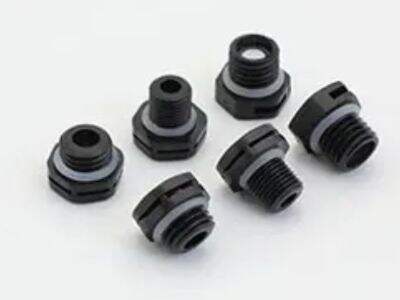Odabir odgovarajućeg materijala za vaš projekat je ključan. Može biti ploče, platno, drvo ili drugi materijali, ali kada započnete projekt, želite da se uvjerite da dobijate najbolje moguće materijale za posao. PVDF i ePTFE su dva najčešće korišćena materijala. PVDF (Poliviniliden fluorid) i ePTFE (Proširena politetrafluoroetilen). Iako na površini ovi materijali mogu izgledati slično, imaju različite karakteristike koje ih čine pogodnim za različite projekte i zadatke.
PVDF u usporedbi sa ePTFE za vaš projekat
Prvo da razgovaramo o PVDF. Ovaj materijal je poznat po tome što je izuzetno jak i čvrst. Takvi aspekti čine PVDF idealnim rešenjem za vanjsku upotrebu. Može se koristiti u stvarima poput prozora, krovova i zidova zgrada. Najvažnija stvar u vezi sa PVDF je činjenica da odoljava mnogim štetnim uticajima. Udaranje kemikalijama, sunčevim zracima, čak i vatri neće ništa promeniti kod polimera. To je tačno razlog zbog koga većina ljudi pruža preferenciju ovom materijalu za cijevi, pumpe i električne delove koji moraju biti zaštićeni i dugotrajni.
Sada, pogledajmo ePTFE. Ovaj materijal je tonalno vrlo različit od PVDF jer je izuzetno elastičan.” Ova fleksibilnost mu omogućava da izdrži ekstremno visoke i niske temperature bez šteta ili gubitka oblika. Zbog ovoga se ePTFE često koristi u ključnim primenama kao što su medicinska uređaja, nosive tehnologije i filtracione sisteme. Drugim rečima, ePTFE za obuću rijetko bi se pojavio zajedno sa medicinskim ePTFE-om u istom uređaju, poput kardioskupa ili određenih filtra za zrak ili tekućine.
Karakteristike PVDF-a i ePTFE-a
Svaki od PVDF-a i ePTFE-a je poseban zbog svojih jedinstvenih osobina. Jedna od glavnih karakteristika PVDF-a je to što ima visoku tačku taljenja. To znači da ga je moguće grejati i oblikovati u razne oblike bez oslabljanja. Dobar je u čuvanju oblika, što je važno u mnogim građevinskim projektima. Takođe ima niski stepen trenja, što ga čini vrlo efikasnim u mašinama i industrijskim primenama.
EGPTFE, s druge strane, je posebno zanimljiv jer sadrži mnogo malih rupa. Ove otvore nosti čine ePTFE izuzetno učinkovitim u filtriranju stvari poput vazduha i tečnosti. To znači da se može koristiti u oblastima gde je higijensko čišćenje i očišćavanje potrebno uzimati u obzir. Pored toga, ePTFE je takođe otporan na širok spektar hemijskih tvari i tečnosti, pa znate da će vaši projekti biti bezbedni.
Koji materijal je pravi za vas?
Dakle, verovatno pitate šta čini jedan materijal boljim od drugog. Odgovor će varirati u zavisnosti od potreba vašeg konkretnog projekta. Stoga mora da se uzmu u obzir nekoliko faktora, uključujući Temperaturu, Hemijsku ekspoziciju, Snagu, Glačinu i Poroznost.
Ako vaš projekt traži nešto što može da izdrži više ili niže temperature, ePTFE bi bio pravi materijal za vas. Međutim, ako je za vaš projekt ključno da se čuva jakost uz održavanje oblika pod pritiskom, onda je PVDF verovatno vaša najbolja opcija. Upoznavanje razlika između ovih opcija će vam pomoći da izaberete mudro.
Usporedba materijala PVDF i ePTFE
U nastavku ćemo detaljnije pogledati kako se PVDF i ePTFE uspoređuju međusobno. Jedna od glavnih razlika je u njihovoj snazi. PVDF ima veću tegobnu snagu, to jest bolje prenosi opterećenje/pritisak. To ga čini prikladnijim za gradnju struktura. S druge strane, iako ePTFE možda nije tako jach kao Gore-Tex, on je fleksibilniji. Ovo ne samo što omogućava njegovu upotrebu u primenama koje uključuju savijanje ili prilagođavanje različitim oblicima, već i pruža fleksibilnost u dizajnu.
Druga važna razlika među ovim materijalima je njihova hemijska otpornost. PVDF ima izuzetnu otpornost na kiseline i druge jake materijale. Zbog toga se često biraju za cijevi u hemijskim fabrikama gdje je važna sigurnost. ePTFE takođe ima dobru hemijsku otpornost, iako se može naduti ili rastvoriti u nekim tečnostima, pa treba biti oprezan pri njegovom upotrebljavanju.
Kada govorimo o poroznosti, ePTFE je vrlo porozan materijal, što ga čini odličnim za filtraciju. PVDF ima mnogo manje rupa; koristi se češće za strukturne primjene i tamo gde je važna jačina.
Postoji još nekoliko razlika kada je riječ o toplini i električnoj energiji. PVDF ima nisku vodljivost topline, tj. loše vodi toplinu. To rečeno, bolje vodi struju nego ePTFE, što može biti važno u nekim projektima.
 EN
EN
 AR
AR
 BG
BG
 HR
HR
 CS
CS
 DA
DA
 NL
NL
 FI
FI
 FR
FR
 DE
DE
 EL
EL
 HI
HI
 IT
IT
 JA
JA
 KO
KO
 NO
NO
 PL
PL
 PT
PT
 RO
RO
 RU
RU
 ES
ES
 SV
SV
 TL
TL
 ID
ID
 LV
LV
 SR
SR
 SK
SK
 SL
SL
 UK
UK
 VI
VI
 SQ
SQ
 HU
HU
 TH
TH
 TR
TR
 AF
AF
 MS
MS
 GA
GA
 CY
CY
 BE
BE
 LA
LA

